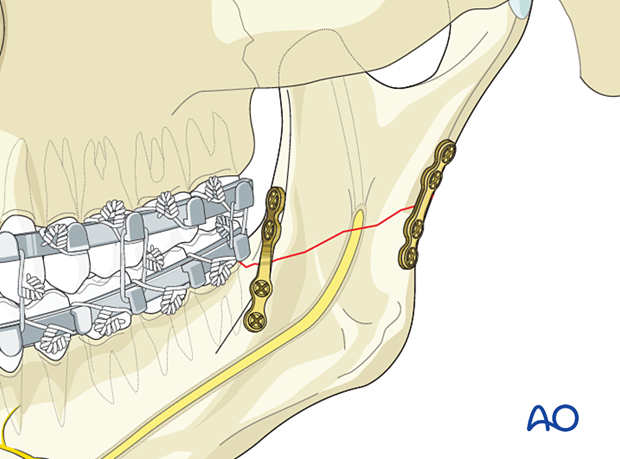ORIF
1. Introduction
Ramus fractures can be treated through either a transoral or a transcutaneous approach.
One can use either small or large bone plates depending on the complexity of the fracture. The goal is to stabilize across the fracture line(s).
Reduction and fixation would be analogous to what is described for the angle fractures.
Given the rarity of these fractures there, are no clear guidelines on how to operatively treat them.
Approaches may be transoral, submandibular, or retromandibular, depending on the fracture pattern.
2. Transverse ramus fracture
These fractures could be treated with one anterior and one posterior miniplate.

3. Vertical ramus fracture
Vertical ramus fractures can be treated with one or two miniplates.

4. Multifragmentary ramus fracture
After simplification with small bone plates, a load-bearing plate could be used to span the area of fragmentation.














